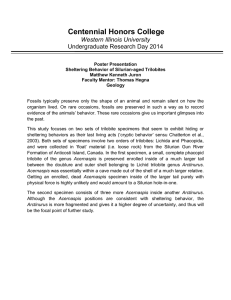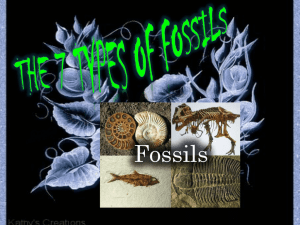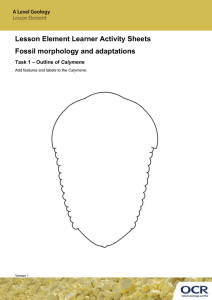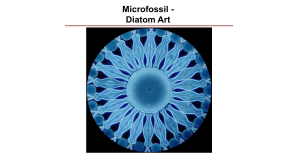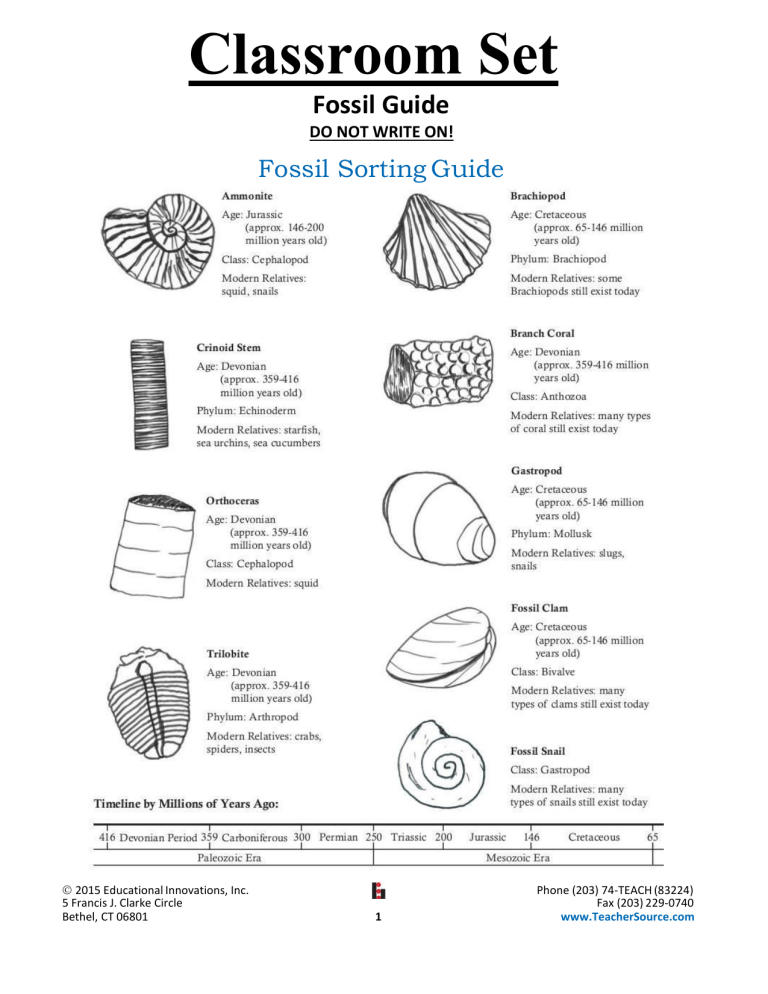
Classroom Set
Fossil Guide
DO NOT WRITE ON!
Fossil Sorting Guide
2015 Educational Innovations, Inc.
5 Francis J. Clarke Circle
Bethel, CT 06801
1
Phone (203) 74-TEACH (83224)
Fax (203) 229-0740
www.TeacherSource.com
FOSSIL IDENTIFICATION KEY
Images obtained from the Internet and altered for clarity.
1. Phylum: ECHINODERM
Geologic Time Period: Paleozoic -Cenozoic
Echinoderms are marine animals usually having a five-fold (pentagonal)
symmetry. Some are attached to the bottom by stems, whereas others are freemoving. Most live by filtering food out of the water, but at least one croup (the
starfish) is carnivorous. Some members of the Phylum are extinct, but there
are many living examples. Crinoid fossils (a variety of "Sea Lily."
A. CRINOIDS
Sea Lilies
Pal. to Cenozoic
B. Sea Urchins
Echinoids
Pal. to Cen.
C. Starfish
Stelleroids
Pal. to Cen.
2. Phylum: ARTHROPOD
D. Blastoids
Pal. to Cen.
Geologic Time Period:Paleozoic
Arthropods make up a wide range of organisms. They include modern crabs,
lobsters, crayfish, insects, and spiders. Besides these, they also include an
extinct class called the TRILOBITES. Trilobites were marine animals that swam,
floated, crawled, and burrowed their way through the Paleozoic Era. Some of the
various types are pictured below:
Trilobite
Trilobite
Trilobite
© Copyright 2008 M. J. Krech. All rights reserved.
Trilobite
Trilobite
Reproduction for educational purposes is encouraged.
© Copyright 2008 M. J. Krech. All rights reserved.
Reproduction for educational purposes is encouraged.

